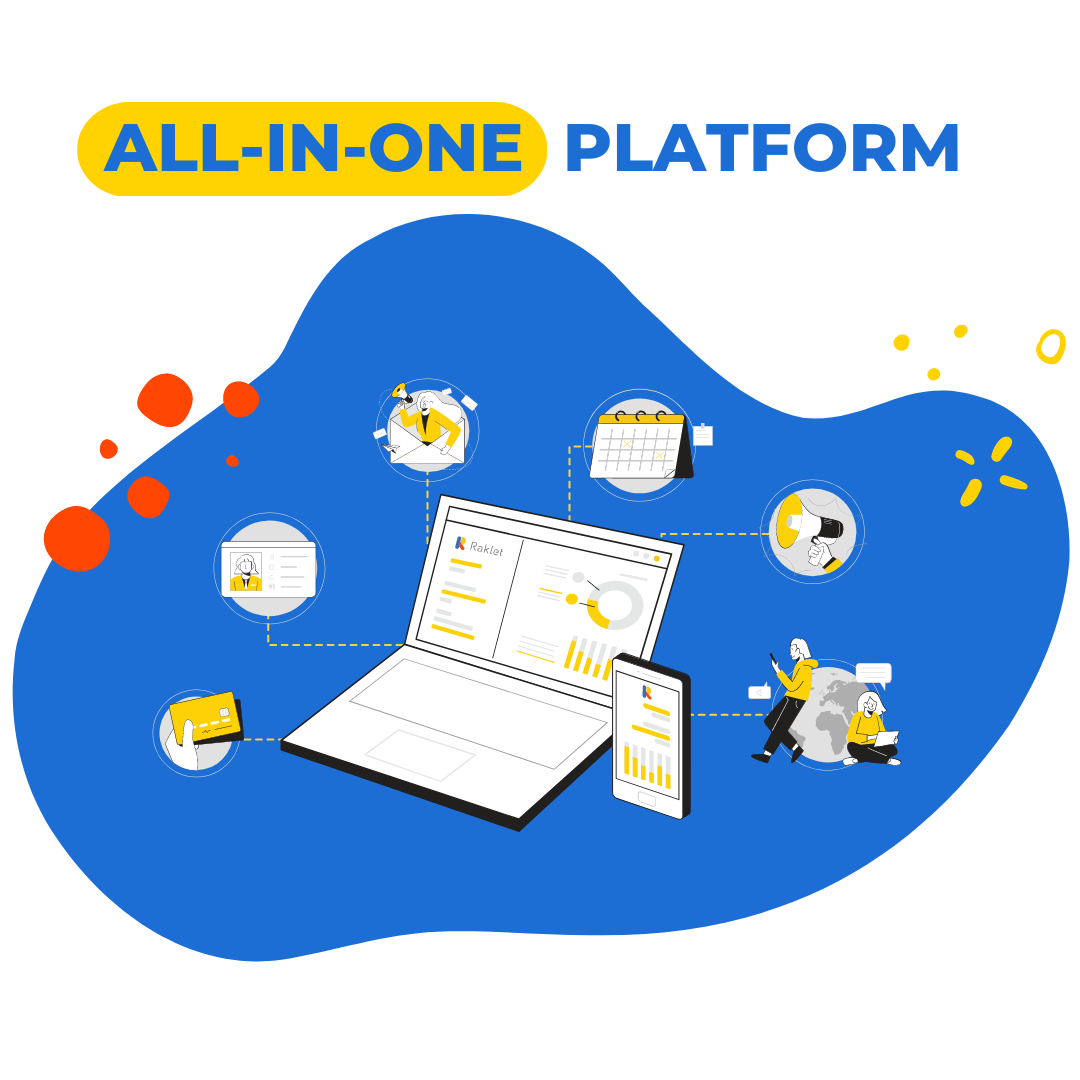Some terms can become confusing when discussing engagement. For example, terms like audience and community are usually used interchangeably even though they have certain differences. So, in this article, we are sharing some differences between audience and community to help you decide which communication strategies to adopt.

The definition of audience
The audience refers to the group of people who are intended to view, listen to, or read a particular piece of content or performance. It can also refer to the group of people who are present at a live event.
The one-to-many relationship between the sharer and the group of interested persons is what defines an audience. You are currently watching a YouTube video that is also being seen by other people. When you’re a spectator, you’re more concerned with what the speaker has to say than you are with becoming friends with other viewers.
Who is The Audience in Communication?
To understand the position of the audience in communication, you can picture yourself watching TV or YouTube. Especially while watching content, the main thing you do is accept input. You are not involved in the conversation or acknowledged as a unique person by the people creating the content. Instead, the people behind the content see you as part of the big group that is their audience.
This is also how it goes for the audience in other types of communication. As a creator or brand, when advertising on various platforms like social media, TV, or even billboards, you expect your audience to only perceive your brand.
You can think of your audience as the people who are there to hear you. The communication between you and your audience is unidirectional and simple. You create content, and your audience consumes it. In this interaction, the audience is usually unable to give feedback through the same means you approach them.
Still, this kind of communication can also bring disadvantages for certain businesses. Here is a list of the pros and cons of having an audience instead of a community:
Pros:
- Audience growth is usually faster than community growth
- Certain events, like going viral on social media, can bring you an abundance of recognition in a very short time
- Maintenance of an audience-speaker relationship is easier than that of a community
Cons:
- Audiences have less of a sense of belonging than community members
- It is also easier to lose your audience in a short period
- Your audience may be more critical and harsher than community members
Different Types of Audiences
There are many different types of audiences, and they can be classified in various ways depending on the context. Some examples of different types of audiences include:
Neutral Audience
A neutral audience refers to audience members that have little to no pre-existing knowledge or opinions about a particular topic or issue. They may be considered impartial or unbiased, and they may be more open to hearing different perspectives or arguments on a given subject.
Hostile Audience
A hostile audience is an audience whose members are actively opposed to the message or viewpoint being presented. They may have strong pre-existing beliefs or opinions that are in opposition to the speaker’s and may be unwilling to hear or consider alternative perspectives. This type of audience is characterized by negative reactions, such as hostility, aggression, or resistance to the message being presented.
Uninformed Audience
An uninformed audience member refers to a group of people who lack knowledge or understanding about a particular topic or subject. They may have little to no prior experience or exposure to the topic being discussed, and may not be aware of the relevant information, facts, or key concepts. An uninformed audience may be more passive and less engaged in the discussion and may require additional explanation or background information in order to understand the topic at hand.
Expert Audience
This is a group of people who have a high level of knowledge, skill, or experience in a particular field or subject. They may be professionals, academics, or practitioners who have an in-depth understanding and specialized knowledge about the topic being discussed. An expert audience may be a more critical, analytical, and engaged audience in the discussion, and may expect a high level of detail, evidence, and technical accuracy from the presenter.

The definition of community
A community is a group of people who live in a particular area or share a common interest or characteristic. It can also refer to a group of people who interact and communicate with one another through a shared platform or social network. Communities can be defined by geographic location, culture, shared values, common goals or interests, or a combination of these factors. They can also be virtual or online communities that exist on the internet or social media.
Who are Community Members in Communication?
A community is formed when a group of people with similar interests or relatable backgrounds meet. The neighbourhood get-togethers, religious groups, and even the parent group of your children’s school friends are all examples of communities.
Most of us become members of many communities without even realizing it. Communities create a ground for people to connect and help each other with many things regarding the community’s purpose.
When it comes to business, communities can be great for bringing loyal customers or workers together. The keyword is loyal here; because, unlike an audience, a community is comprised of people who are dedicated to the service/product your brand provides.
Many brands use communities to strengthen their bonds with customers today. Because a community of people is willing to spend time exchanging information and resources regarding your business, which can hold incredible value for your growth.
A business can create two main types of communities: Customer Community and Worker Community.
Customer Communities
Customer communities can be created naturally by the customers or kickstarted by the brand itself. These communities are usually comprised of people who are fans of what you provide and want to share their experiences with others.
For example, imagine that you have a famous bakery that changes menu items seasonally. Some regular customers may enjoy your service so much that they create groups on social media to discuss their experiences and share pictures of the cakes they purchase. On these platforms, customers can discuss what they think of your new cake flavors, recommend each other products, and even organize get-togethers! This is surely a great way to earn loyal customers and get honest feedback from people who genuinely enjoy what you offer.
The second scenario would be announcing that you are creating this community yourself. For example, your brand can announce the creation of an open Facebook group where you will hold activities or create hashtags. This will not only bring customers together but also create curiosity and attract their attention with some new action.
Worker Communities
Most things we have mentioned apply to worker communities, but worker communities surely have different benefits. The sincerity of the communication between the working members is one of the most important values of any type of business. We all know that having happy workers equals a happy business, and one of the ways you can assure this is by creating a warm community for them.
Like customer communities, worker communities ensure loyalty and keep people excited. These communities can be places where you connect with your workers on a deeper level, provide them with fun opportunities (like contests with prizes), let them share their experiences, and overall improve your connections.
In summary, communities are places where communication takes place in many directions. While you can provide content for community members, members can communicate with you or among themselves. As with most things, this also has some pros and cons:
Pros:
- Communities connect people who give real value to your business
- Communities increase loyalty and let people actively take part in various areas
- Community members tend to be more forgiving and less harsh
Cons:
- It is harder to build a community from scratch
- Communities require more maintenance and personal attention to stay active
- You need an initial audience to form a community
Different Types of Community
There are many different types of communities, and they can be classified in various ways depending on the context. Some examples of different types of communities include:
Interest-based communities
Interest-based communities, also known as affinity communities, are groups of people who share a common interest or passion. These types of communities are formed around a particular topic, hobby, or activity, and bring together individuals who share similar interests and goals. Examples of interest-based communities include sports communities, gaming, and photography communities. These can be great sources of information, inspiration, and resources for those interested in a particular topic.
Demographic communities
Demographic communities, also known as population segments, are groups of people who share certain characteristics, such as age, race, gender, or occupation. These types of communities are formed based on demographic attributes and can overlap with other types of communities. Demographic communities can be important in understanding consumer behavior, and market trends, and making strategic decisions. They also can be a way to connect with people who share similar life experiences and to build solidarity around common challenges and goals.
Virtual communities
Virtual communities, also known as online communities, are groups of people who interact and communicate with one another through a shared platform or social network. An online community is a group of people who interact and communicate with one another through a shared platform or social network. These types of communities are formed and exist in the digital world and can be focused on a wide range of topics, interests, or objectives.
Religious communities
Religious communities are groups of people who share a common religion or faith. These types of communities are formed around religious beliefs and practices and can include people from different demographic backgrounds. Religious communities often provide a sense of belonging, support, and spiritual guidance for their members. They also can be a source of social and cultural activities and can play an important role in shaping the values and beliefs of their members.

What is the Difference Between an Audience and a Community?
Here is a list that summarizes everything we have mentioned to make things easier:
| Audience | Community |
| -Unidirectional communication | -Multidirectional and deeper communication |
| -Less feedback from client/customer | -More and valuable feedback from clients, customers, and workers |
| -Can be more critical and harsher | -Less critical or harsh |
| -Easy to lose, not as loyal | -Harder to lose, loyal |
| -Easy to gain an audience | -Harder to create a community |
| -Individual differences are not considered | -Individuality is valued |
| -Does not require intense maintenance | -Requires maintenance and keeping up |
| -Emerges before community | -Emerges after gaining an audience |
| -A small percentage is likely to be closely interested in your business | -Most of the members are closely interested in your business |
| -Approaching many people at once | -Requires personal connection |
| -Entertainment and individual benefit are the primary concerns | -Interactions, providing help to each other, and growth are the primary concerns |
How do you build audiences by engaging your community?
Building audiences by engaging your successful community can be a gradual and ongoing process that involves several steps:
Identify your target audience
Before you can engage your community, you need to know who you are trying to reach. Identify your target audience by considering factors such as demographics, interests, and behaviors. This will help you tailor your message and approach to the specific needs and preferences of your audience.
Create valuable content
To engage your community, you need to provide content that is relevant, useful, and interesting to them. This could include blog posts, videos, podcasts, infographics, or other forms of content that are aligned with the interests of your audience.
Use social media
Social media is a powerful tool for building and engaging audiences. Platforms such as Facebook, Twitter, Instagram, and LinkedIn can be used to share your content, connect with your audience, and build relationships.
Connect with other communities
Building your audience also means connecting with other communities that share similar interests and values. This can help you expand your reach and connect with new audiences.
Measure and analyze
Continuously measure and analyze your audience engagement and audience growth, this will help you understand what’s working, what’s not, and what can be improved.
By following these steps, you can build a loyal and engaged community that will help you grow your audience over time.
5 Ways to Turn Your Audience into a Community
We provide some recommended practices for building communities among your audience. Make sure to incorporate these tactics into your work as they contribute to the effectiveness of your marketing initiatives.
Encourage interaction
Building a community requires regular engagement and interaction. Encourage your audience to participate in discussions, provide feedback, and share their own experiences and perspectives.
Make a place or places where the audience may interact
By creating spaces for your audience to interact and engage with one another, you can encourage them to become more invested in the community and build stronger connections with one another. It’s important to monitor and moderate these spaces to ensure that they remain safe and respectful for all members.
Encourage conversation in community areas
Encourage your audience to share their thoughts and opinions by asking open-ended questions related to your topic or industry. Share content that is likely to spark discussion and encourage your audience to share their own thoughts and experiences. By stimulating discussion and encouraging engagement, you can create a sense of community and build stronger connections among your audience.
Increase individualized customization
Use your audience’s name when communicating with them, and tailor your messages and content to their specific interests and needs. Also use data and analytics to recommend content, products, or services that align with the individual preferences of your audience. By increasing individualized customization, you can create a sense of belonging and relevance for your audience, which can help to build stronger connections and engagement with your community.
Appreciate the contributions of your community
Express your appreciation to your community members for their contributions, engagement, and support. This can be done through personal messages, shout-outs, or public recognition. By appreciating and recognizing the contributions of your community, you can create a sense of value and belonging, which can help to build stronger connections and engagement with your audience.
,…And that’s it!
Now you know the difference between audience and community and are ready to improve the personal relations of your business!
Read more articles from our blog:










